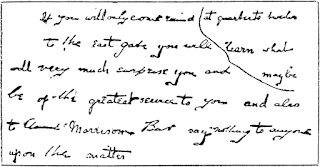Holmes is exhausted after the resolution of a
complex case. Three countries were involved, and it took two months of intense
work for the genius to sort it out. As always, Holmes is also deeply depressed,
because such an opportunity is not likely to come upon him soon.
Watson persuades him to pay a visit to an old
friend, met in Afghanistan, Colonel Hayter, who lives near Reigate, in
Surrey. The Colonel and Holmes have much in common, and Watson is soon
relieved, confident that his friend will take some rest without being too bored.
But the fate seems to persist against him: a burglary, and then a murder, is
committed in peculiar fashion in two houses of the neighbourhood.
In the first one, the Acton’s property, the
library was found upside down; nothing was lacking but for an absurd collection
of items. Acton and Cunningham used to be among the richest local families, but
they are engaged in a legal action against each other for decades, and have lost a
good part of their wealth in it. One day after the first burglary, a second one
occurred in Cunningham’s house, and this one turned nasty: William Kirwan, a
coachman, good servant and quiet man, was shot dead. A bit of paper was found
in his hand. An hour could be read “a quarter to twelve”: the very hour when
the poor man met his end.
Hearing of the presence of the great detective,
inspector Forrester comes immediately. When he sees the familiar light shining in
Holmes’ eyes, Watson resignedly understands that his attempt for a break in solving
mysteries will be hopeless.
In this story Holmes shows a new capacity in
his range of talents: his interest in graphology. Undoubtedly, graphology may
be of use in a criminal investigation, and was probably brand new at the end of
the 19th century. It is however a tool to be careful used. For example, when
Holmes deduces a family link from two samples of words, it seems a little bit doubtful.
The story in itself is an
interesting one. A pity that, after a case well exposed then explained, Doyle
adds a new character in the very last lines, which plays no role in the plot at
all. That oddity put aside, all elements are well balanced in the story: the
case, the second-hand characters –Watson’s friend, the local inspector- and the
“old couple” relationship between Holmes and his friend.

No comments:
Post a Comment